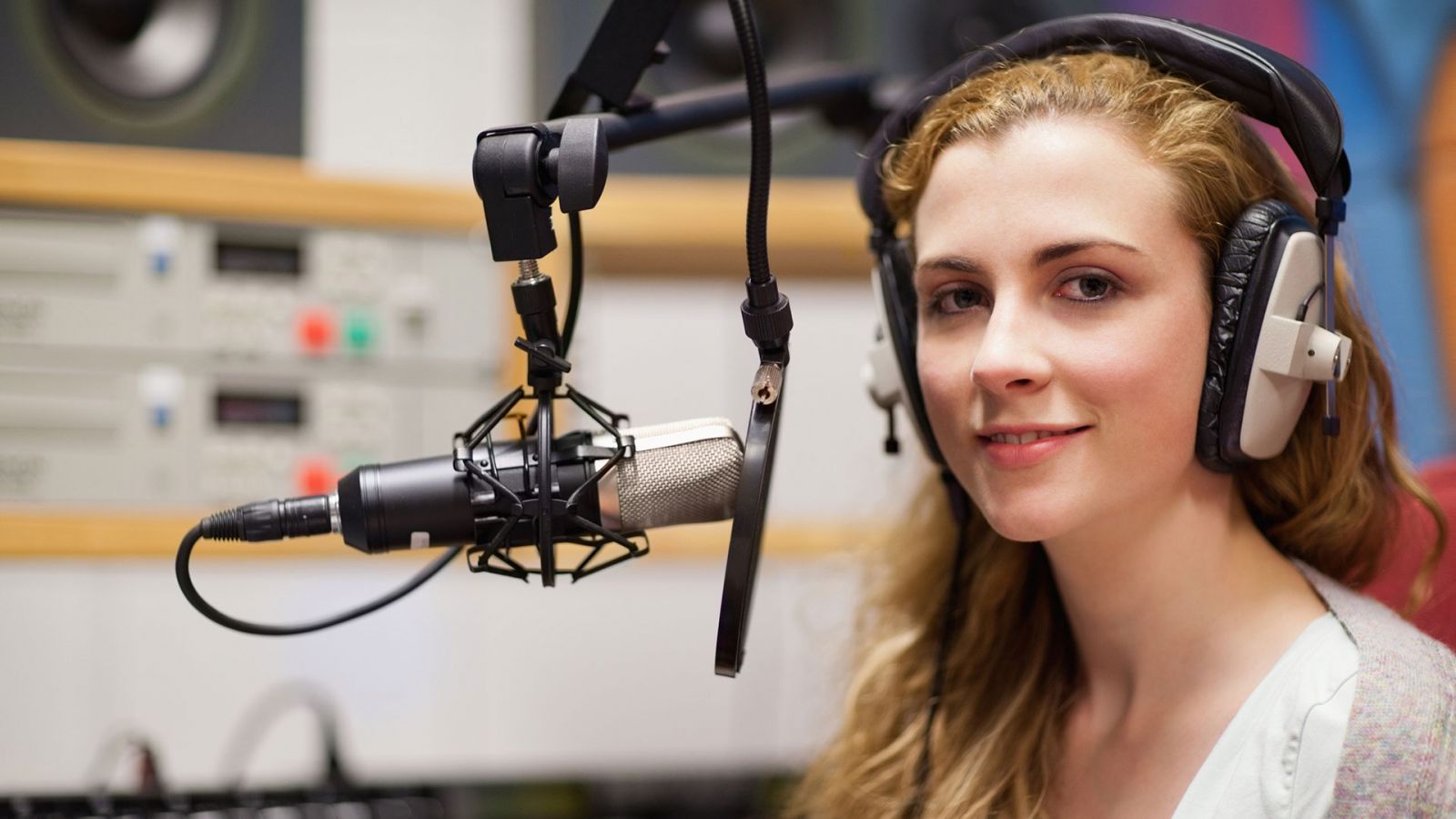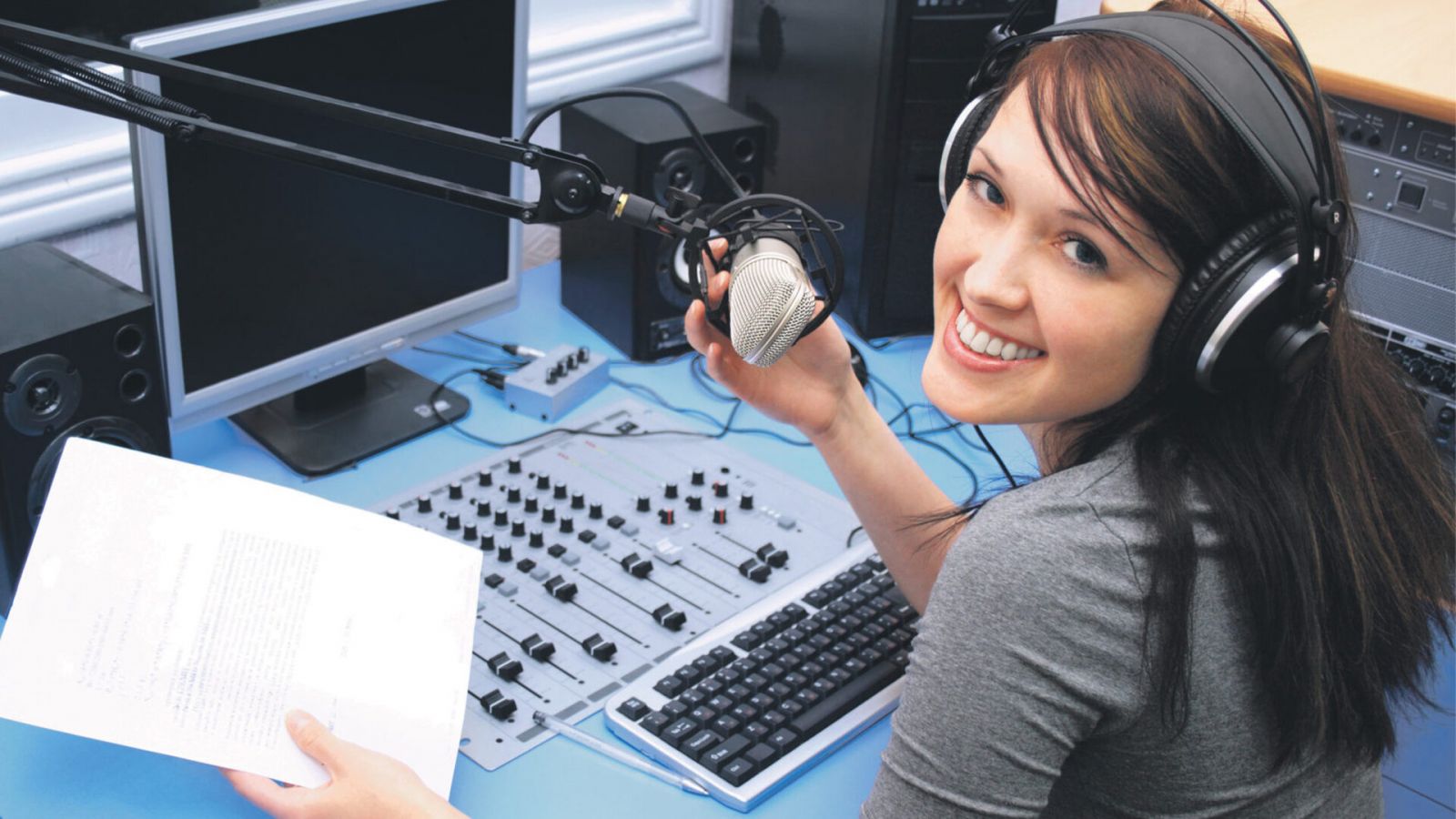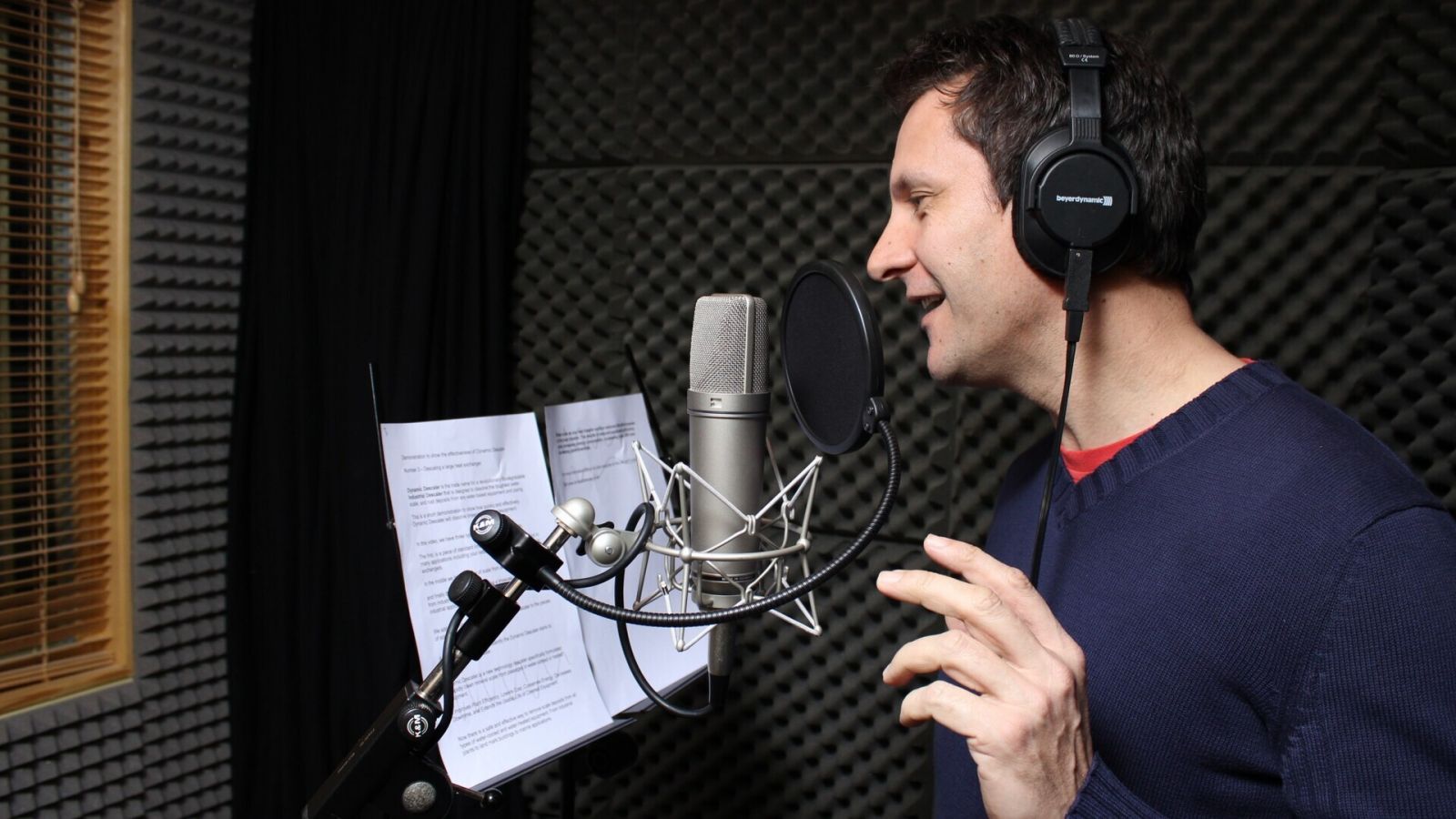As a result of the development of technology and the more frequent use of new tools, there are parallel differences in services in the translation industry. Just as the translation does not come to mind when it comes to transferring texts from one text to another, the requests submitted to translation agencies within the scope of translation services also change. The increase in the volume of audiovisual translation services creates needs and demands in different fields. Audiovisual translation is a field that concerns the translation of subtitles and voiceover for productions such as movies, TV series, documentaries, news, and advertisements. In a globalized world, the demands and needs for voiceover and dubbing for video content are also increasing. You can request professional voiceover service for a quality result in voiceover services that require proper equipment and expertise.
Voiceover and dubbing are services that include different stages and factors. Showing the difference between the two concepts is important in terms of meeting customer demands within the scope of translation services and advancing the process correctly.

What Are Voiceover and Dubbing?
Voiceover refers to the process of reading the texts by the voiceover artist that constitute the visual or auditory contents made for introductory, narrator and advertising purposes, within the framework of certain factors such as elocution, emphasis, intonation, and recording them in the studio. It is a service needed in different productions such as advertisement, promotional film, telephone central, radio and television commercials. In general, as an external voice narrates the scene in the background, it is widely used in documentaries and there are needs brought by developing technologies such as e-book voiceovers. The voiceover is also referred to as off-camera or off-stage commentary. It is a technique where a voice is used in television, radio, film production and theater without its counterpart as a character. Speaking in commercials, subway stop announcements, telephone switchboard announcements, productions such as background sound in training videos can be given as examples of voiceovers.
Dubbing is the process of speaking in a different language or in the same language for the characters in projects such as documentaries, movies, TV series. The artist dubs in the dubbing studio in the same expressions and in appropriate synchronization according to the voice and gestures of the character. Lip sync in the same language is very important in dubbing. However, if the dubbing is in a different language, then timing is important at this point because lip sync is quite difficult. In some cases, depending on the type of production being worked on, a dubbing artist with certain theatrical skills is demanded. Despite the increasing popularity of voiceover and subtitles, dubbing and lip sync is one of the preferred services to watch the video content in another language. In dubbing, the translator adapts the dialog lists of the original text to the foreign language so that the lips and timing are in sync with the video. To ensure the video content is dubbed correctly, the video text must be translated by an expert team. For a professional and top-notch dubbing service, translation agencies work with freelance dubbing artists or a dubbing agency, following the translation stage. There are well-known professional Turkish dubbing artists in this business in Turkey. We often come across these familiar voices in animations, e-books or foreign films.
The voiceover stage usually consists of the narrator reading the translated text and overlapping it on the video. Dubbing refers to the process that professional voiceover artists imitate lip movements by replacing the original dialog with a new, translated voice.

How Is Voiceover Translation Performed?
Voiceover translations are needed in various fields. There may be a need for voiceover in events performed by entities such as movie theaters, TV channels, voiceover studios that offer translation services for digital platforms, brokerage houses and companies and film distribution companies, film festivals, cultural centers, museums, galleries. Subtitle translator and voiceover artist work on a common text. As this text includes elements such as images, sound, and intonation, it is considered separately from other text types.
You can get professional translation support for your voiceover translation needs for short film, video or audio recording. Voiceover translation is a type of translation that requires special attention like other types of translation. The video content is translated by transcribing, and then professional voiceover artist record and prepare the recordings. Professional voice recorder and voice recording equipment must be used for a high-level result. The lack of background noise is as important as the quality of the sound. The slightest background noise and even a secondary sound affect the quality of the voiceover and recording. For a professional voiceover, the voiceover artists work in the recording studio. Some voiceover artists with a home recording studio can also deliver a very high-quality work in a home environment.
The average speed of voiceovers is usually 2.5 words per second, which corresponds to a minimum of 150 words per minute. At a slower speed, a voiceover artist can read 120 words per minute, and at higher speed, up to a maximum of 200 words per minute. This varies by language. For example, English is a language with low information density, moderate speech speed. Spanish is a very fast spoken language while German is very slow. In languages with long words such as German, the number of words that can be spoken per minute lowers. Therefore, 1-hour voice or video recording is expected to be 6,000-7,000 words. These factors change the number of words read per minute. The translation will be longer, especially when a video text in English is translated into a language such as Arabic or Indonesian. In such a case, the voiceover artist must pay attention to the pauses and lengths in the original video.
Variations can be made on the voiceover according to the customer’s request. For example, in synchronous voiceover, voiceover artists must speak in segments where the speaker speaks, and must not speak where they do not speak, otherwise both video and audio will shift. In training video voiceover, when the instructor is speaking, the voiceover artist does not speak or when the instructor does not speak, the voiceover speaks, then the audience will be confused.
For the customer who has an Arabic voiceover need, it is necessary to first consider different dialects of Arabic, deliver translation to the appropriate language in the first step and then deliver a voiceover.
The quality of the text to be sent to the voiceover artist is also very important. Translations completed without errors in translation should be checked and made ready based on factors such as spelling and punctuation, compatibility with the source text.
For example, in foreign language voiceover translation, transcribing the text in the video with actions such as transcription of videos in foreign language and then Russian translation is done. In the last stage, the professional voiceover artist performs the translation voiceover.
Voiceover translation is an indispensable stage to reach and universalize any video, film, voice recording to a larger audience.
For voiceover translation, it is necessary to merge the script just like in dubbing and format it with time codes. Once this is done, the voiceover starts, but translators must be aware that this is a voiceover script. So, they pay attention to the length of the translated language. Then, the native-speaking voiceover artist watches the video and matches and records its speech with the character speaking on the screen. Finally, sound engineers need to embed the dubbed track into the original audio track and render the final video.

What to Watch Out in Voiceover?
First of all, voiceover artist must analyze the text well. They must grasp the general mood of the text and read it with emphasis and intonations accordingly. They must pay attention to the tone and pace of the speaker, and use the emphasis and intonations accordingly. As each voiceover artist has a specific tone color and style, a voiceover artist must be selected suitable for the mood of the text and, if any, the speaker in the original production. For example, if a speaker is speaking at a slower pace, the people watching the video will be confused if the voiceover artist speaks at a faster pace. When the speaker in the original recording speaks at a faster pace and excitedly, if the voiceover artist speaks at a slow and calmer pace, it will again cause confusion in the audience. When choosing a voiceover artist, care should be taken to ensure that the tone of the voice of the original speaker is similar. In order to increase the quality of the work and to ensure mutual satisfaction, a healthy communication must be established with the voiceover artist and the voiceover artist must be instructed based on customer expectations.
It is also important to speak the language in which the voiceover is performed and to follow the rules of diction. In Turkish voiceover, the voiceover artist must speak Turkish properly and pay attention to diction. A reading style with impaired articulation can be extremely disturbing for the audience. The voiceover artist must also pay attention to the timing. The speed and fluency of the text must be arranged in accordance with the length of the main source where the voiceover is made.
What Is the Daily Capacity Of A Voiceover Artist In Terms Of Number Of Words?
This depends on the required voiceover service, but we can still make average calculations. The recording that the voiceover artists take is always longer than the final version of the recording. Reasons for this may include pauses by the voiceover artist while recording audio, unwanted sounds such as coughing, sniffing, and restarting the sentence that was left incomplete with the thought that a better intonation could be achieved. In addition to deleting unwanted parts in the voiceover, adaptation of the voice to the desired technical characteristics is considered within the total duration of the voiceover task.
A professional voiceover artist can record an average of 800 to 1,000 words of audio per hour. A voiceover artist who works 7 or 8 hours a day can be expected to record a maximum of 4 or 5 hours a day. We can assume that they can record an average of 3,000 to 4,000 words. A faster voiceover artist can record 5,000 words a day. However, if we assume that the voiceover artist will also spend time editing their recording, it is necessary to calculate the daily productivity.
How is Voiceover Translation Fee Calculated?
Voiceover artists who do not have a home studio rent a studio based on the time of the recording. Studio recording fees usually vary based on how many hours the voiceover artists will spend in the studio. When requesting a voiceover service, word count is usually preferred, because both the actual volume of the work is understood more clearly and a clearer voiceover fee calculation can be done for the customer.
Voiceover translation fee is calculated based on criteria such as the language of the text to be translated, the target language, number of words, time to complete the translation and voiceover, and the level of urgency as in other types of translation services. You should determine your needs correctly with your service provider for the voiceover translation of your video or audio recording.
Author: Özlem Gerguş
Date of Issue: 04/23/2021
Target Audience: Those who need voiceover service, Voiceover artists
Software Translation Services
Software Translation Services
With the emergence of a ...
Game Localization Service
Video games, which started to become widespread in the 1980s and appeal to ...
What Is SEO? Why Do We Need SEO?
Millions of internet users utilize search engines daily to find products, access ...
Simultaneous Interpretation Equipment Service
Simultaneous Interpretation Equipment
Simultaneous Interpretation Service
Simultaneous interpretation is an interpretation service provided by ...
Website Localization Services
The internet, which got involved in our lives at the beginning of the 21st century, has become an ...
Frequently Asked Questions About Localization
What Is Localization?
Localization is also known as ...
Frequently Asked Questions About Sworn Translation
What Is Sworn Translation? What Is Sworn Interpretation?
In general, ...
Frequently Asked Questions About Transcreation
What Is Transcreation?
Transcreation or creative ...
Frequently Asked Questions About Technical Writing
What Is Technical Writing?
Technical writing involves the ...
Frequently Asked Questions About Voice-Over
What Is Voice-Over?
Voice-over refers to removing the ...
Frequently Asked Questions About SEO Writing
What Is SEO?
SEO is an abbreviation for ...
Frequently Asked Questions About Proofreading
What Is Proofreading?
Proofreading means “the ...
Frequently Asked Questions About Desktop Publishing
What Is Desktop Publishing?
Desktop publishing ...
Frequently Asked Questions About Machine Translation
What Is Machine Translation?
Machine translation is a ...
Frequently Asked Questions About Article Writing
What Is Copywriting?
Copywriting is a service that ...
Frequently Asked Questions About Editing
Who Is An Editor?
An editor is the person who plans ...
Frequently Asked Questions About Transcription
What Is Transcription? What Is Transcription About?
Transcription ...
Frequently Asked Questions About Subtitle Translation
What Is Subtitle Translation?
Subtitle translation is a ...
Mobile Application Translation
What comes to mind when you think of a mobile application? Listening to music, ...
LocNowAndFuture - Creative Minds Come Together
A valuable virtual conference and networking event for the localization ...
We Provided Simultaneous Interpretation at the Launch for the 5th Generation, New Renault Clio
Earlier this week, we participated in the launch of the new Renault Clio in Antalya as a provider of ...
Have You Ever Considered the Remote Interpreting Service Solution?
With the recent advances in communication technology, demands for online meetings such as video ...